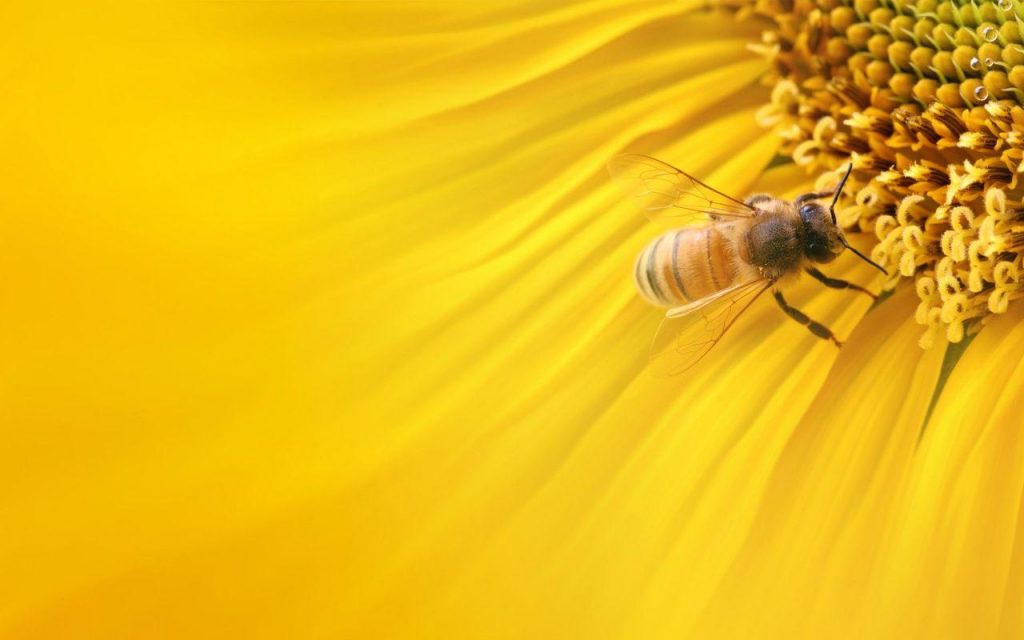Marching Orders | Covid’s Attention War
Covid-19 is a disease of the body, but infected and uninfected alike are equally susceptible to its comorbidity of the mind: the “infodemic.”
Declared by the World Health Organization, academia, libraries, and governments worldwide, symptoms of the Covid infodemic include compulsive doom scrolling, the despondency of information overload, and false beliefs fed by online misinformation (often attributed to snake-oil hustlers, social media opportunists, and average citizens)1. Effects of the infodemic linger, leaving its victims feeling overwhelmed, confused, and distrustful. Once afflicted, many people turned to established medical authorities, government agencies, and news sources in response—and away from friends and family. 2 Then, the second-wave infodemic hit—the flip-flops, walk-backs, retractions, corrections, and other information variants incubating in officialdom. The modest trust bump benefitting many institutions during the first year of the pandemic receded.3 Once reflexively smeared as conspiracy theories, questions about the pandemic’s origin—and about the risk-benefit of various public-health responses—were now resurfaced as legitimate lines of inquiry. Such developments leave many to wonder: What did our officials know, and when did they know it?
Surely, not all of the misinformation disseminated from authority sources was disinformation (intentionally misleading information)—they may have relayed what they thought was true at the time. Such is the nature of transparency and real-time information sharing in the face of a complex, novel, globalized threat. Our officials are only human, after all.
But the infodemic presents additional, subtler symptoms. Contact tracing, a useful public health technique for identifying and containing early outbreaks, also enhanced the state’s capacity for physical surveillance of individuals’ movements and real-world interactions; it’s a capability many governments outsourced to private corporations. In Pennsylvania, members of the public were urged by Governor Tom Wolf to enforce statewide lockdowns and mask mandates on each other, effectively encouraging public health vigilantism and putting further strains on social trust.4 Social media platforms insert intrusive pandemic notifications and warnings in their content streams, and coordinate with state agencies, academics, and legacy media to determine which content and users to censor; now independent journalists such as Glenn Greenwald have testified before the House Subcommittee on Antitrust, Commercial, and Administrative Law about the role of corporate media in advocating for censorship on social media platforms. Government agencies hire celebrities and social media influencers to promote state rhetoric about public health during the pandemic.5 Parsing what is happening in our information landscape requires continued debate and questioning.
The last time I wrote about surveillance, trust decline, censorship, and propaganda, I was writing for the Office for Intellectual Freedom of the American Library Association about information warfare.6
The first casualty of war: truth or algorithmically controlled attention?
Information warfare targets we, the people.
Bombarded by partial truths, monitoring of our speech and interactions, emotional manipulation, and “lies, damned lies, and statistics,” we can be unwittingly employed in the “psyops” or “psychological warfare operations” created by all kinds of agents. As we increasingly seek and share information online, clandestine networks of behavioral trackers and recommender systems observe, shape, and nudge our concerns, questions, opinions, and engagements; the more these algorithms know about us, the softer of a target we are for those who wish to alter our thoughts, emotions, and actions.
The Covid-19 pandemic is not just an epidemiological event—it is also another front in a simmering information war, the contours of which encompass the 2013-14 Euromaidan unrest in Ukraine, the 2016 Brexit referendum, elections in the US, and Russiagate (and its spinoffs). It encompasses 2020’s “mostly peaceful protests”—the phrase used in an infamous CNN broadcast in front of a burning car lot—and at least 25 politically motivated deaths as well as record-setting property destruction exceeding $1 billion; 2021’s January 6th riot; and numerous skirmishes in-between. 7
One of the defining characteristics shared by these occurrences is the unmistakable alignment of state, media, academia, think tanks, and megacorporations force feeding a hermetically sealed hegemony on an increasingly distrustful and frenzied citizenry. When the truth is inevitably outed, the powers that be brazenly forge on, smearing the truth-bearers, denying their prior knowledge, claiming the emergent truth as their party line all along. Some simply shrug it off to the tune of, “Who could have known?”
“…the more these algorithms know about us, the softer of a target we are for those who wish to alter our thoughts, emotions, and actions.”
The Onslaught of Information
Not yet a public health emergency of international concern.9
“No evidence of human-to-human transmission outside China.”10
“There is no need to avoid public spaces.”11
“Precautions have been taken by our city.”12
New York will run out of ventilators in six days.13
Two weeks to flatten the curve. 14
Gyms closed15; liquor stores open.16
The curve is off by an order of magnitude.17
“The typical mask you buy at the drug store is not really effective.” 18
“Seriously people, stop buying masks.” 19
Wear a mask in public. 20
Wear a mask in your own home. 21
Wear two masks. 22
Wear goggles.23
Covid-19 has natural, zoonotic origins.24
Covid-19 definitely did not come from a lab.25
Covid-19 might have come from a lab.26
The National Institutes of Health “has not ever and does not now fund gain-of-function research at the Wuhan Institute of Virology.”27
Here’s a receipt for what appears to be NIH funding of gain-of-function research at the Wuhan Institute of Virology.28
Public health guidelines are issued based on case data. 29
Tests can generate false-positives. 30
Tests can generate false-negatives.31
We’re not tracking all cases in more than half the population.32
Vaccines work, but wear your mask.33
Masks work, but get your vaccine.34
Vaccines work, but will require boosters.35
Masks work, but society requires vaccine passports.36
Masks and vaccines work, but prepare for more lockdowns.37

Twentieth-century state-sponsored information warfare tactics were crude, one-size-fits-all affairs. Mass communication occurred at population scale: pamphlet drops by weather balloon over a targeted region, forgeries and leaks disseminated to state officials to provoke an overreaction, stories planted in the foreign press in the hopes that domestic media would report on them, staged conferences featuring journalists, scholars, writers, and artists acting as witting or unwitting agents. Psychological operations were carried out as covert actions through front organizations so that connections to state sponsors could remain obscured.
The advent of digital communications and social media turned this paradigm on its head. Mass communication can now be micro-targeted, not just to individuals, but to individuals at the precise moment that they are psychologically and physiologically primed to be most receptive to the message. The distinction between inauthentic, witting agents and authentic, unwitting messengers has collapsed, as social media users reshare posts and relay content which might have originated as disinformation but which they nevertheless earnestly think to be true.
Most interestingly, the government’s role is no longer concealed; intelligence agents appear as regular commentators on news programs, state agencies openly recruit social media influencers to convey their messaging,8 and the government coordinates with academia and corporate and social media to profile, censor, and suppress counterinformation and contrary views.
It’s been said that the first casualty of war is truth, but that’s not always the case in information warfare: Truth, tactically crafted, is often the most powerful weapon available. Instead, the first casualty of information war is attention. Herbert Simon recognized early that the information economy is actually an attention economy; information is virtually infinite and becomes ever cheaper to generate, acquire, and exchange, while attention remains stubbornly finite and increasingly expensive to capture, maintain, and monetize. Neurobiologically speaking, a person can process only so many stimuli at any given time, and can consciously consider a mere one. Information warfare tactically relies on attention engineering, manipulating the conditions that compose our sense of what’s real, of which information itself is only one factor.
The 21st century is a golden age of attention engineering, enabled by the intertwining strands of knowledge, capability, and culture. Disciplines such as psychology, sociology, mass communication, and neuroscience reveal the functions of attention, both physical and metaphysical, and the mechanisms by which it can be shaped. This knowledge is actively applied to the development of consumer technology, incorporating elements of persuasive design to grab hold of our attention and influence the ways in which we process information. The adoption of such technologies into daily life engenders a culture which is not merely tolerant of, but encourages and rewards, a state of constant distraction and attention overload. We are alerted, notified, nudged, recommended, and reminded into intellectual and behavioral cattle chutes by the bevy of devices accompanying our every waking moment (and logging our sleeping ones).
The fundamental strategy of information warfare is to sever you from your reality, to intercede in the intimacy between your senses and your sense of the world. The objective will shift along any number of spectra, from inciting action to instilling inaction, inspiring loyalty to inducing hatred, integrating unity to incising division. Likewise, the tactics deployed vary according to the population targeted and the means available, and the aggressors may range from multinational corporations to policy institutes to state actors to media personalities to unwitting acquaintances to botnets. But the fundamental strategy remains: Supplant your authentic reality with an artificial one.
Farewell to harms: maintaining peace of mind in an information war
I won’t—indeed, can’t—tell you what to think about Covid-19, or the multiplicity of public-health measures implemented to combat it, or the mutating narratives which claim to explain it. But I can tell you how an observer of information warfare prepares to venture headlong into the fray:
Surrender your weapons. The surest way to avoid enlistment as an unwitting agent in the information war is to desist resharing content on social media or in other communications. Observe, but don’t report.
Embrace uncertainty. As Marcus Aurelius observed, “It is in our power to have no opinion about a thing.” To be certain is to be captive—both to the defense of your stance, and to other third parties espousing it. Reserve the right to change your mind.
Adopt watchful waiting. The precautionary principle preserves the possibility for future action, while taking a partially (mis)informed action now may preclude the possibility of better options down the line.
Demand more of authorities. If you’re in the habit of asking for evidence to verify claims made by your loved ones and random internet strangers, good! Apply this same standard to institutions. Credentials and offices alone should carry little more weight than royal pedigree or sovereign titles when it comes to information. Trust is earned.
Suspend disbelief. Look for the Three C’s: narratives that are censored, dismissed as conspiracy theories, or the subject of citizen journalism are often worth further consideration. Seek out nuance.
Maintain readiness. Fear makes you an easy mark, susceptible to manipulation, divisive rhetoric, and polarization. Sustain your inner self by attending to your privacy and nurturing intimate relationships. Pursue self-reliance and community resilience to lessen your vulnerability to systemic shocks. Immerse yourself in something that allows you to forget that Covid-19 even exists.
If history is any indication, we might have to wait a generation or more before learning the truth about Covid-19, and its symbiont infodemic. Writing in Human Events, Jeremy Carl reminds us that “progressive pieties” about what the AIDS virus was, how it spread, and who was most affected led many into certain death, and that there is no way to know right now everything that we will eventually know about our current pandemic.
Until such time, may we act in such a way so as to ensure the integrity of the information record—and of ourselves.
This article originally appeared in Root Quarterly
 Root Quarterly is a print-only, subscription-based quarterly journal rooted in Philadelphia, but celebrating content from Pennsylvania and beyond. Root Quarterly celebrates artists, writers, social entrepreneurs, and neighborhoods, and looks at critical analyses of larger ideas, and criticism and appreciation of nationally relevant cultural touchstones. “Expect to hold something in your hand that you might want to curl up with on a Sunday afternoon that may by turns delight, challenge, and inspire you.”
Root Quarterly is a print-only, subscription-based quarterly journal rooted in Philadelphia, but celebrating content from Pennsylvania and beyond. Root Quarterly celebrates artists, writers, social entrepreneurs, and neighborhoods, and looks at critical analyses of larger ideas, and criticism and appreciation of nationally relevant cultural touchstones. “Expect to hold something in your hand that you might want to curl up with on a Sunday afternoon that may by turns delight, challenge, and inspire you.”







Many teachers have stayed in their classrooms to keep our students in school, and protect our families from loosing their jobs due to lack of childcare. In general, 98% of our students have done well physically. However, the information war-fare that has accompanied the Covid Healthcare period 200-21 has created very real mental health issues for both students and adults. The ensuing lack of trust in our public healthcare providers, CDC, WHO, FDA etc., and the lack of honest information about all possible solutions to maintain robust individual immune systems, along with the refusal to provide fatality data showing co-morbidity and age, surely has raised the level of distrust for many. It’s refreshing to read an honest, analytical and thoughtful librarian’s research, instead of relying on a Gooogle massaged rendition of the current version of official facts.